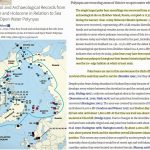
By Kenneth Richard on 5. September 2022
Abundant polar bear remains dating to 8000 to 9000 years ago have been found on Zhokhov Island, which is today surrounded by year-round sea ice (even in summer). This Arctic latitude (76°N) is too cold and thus too ice-covered for polar bears to inhabit today. During the Early Holocene CO2 concentrations ranged between 255 to […]
Posted in Arctic, Paleo-climatology, Sea Ice |
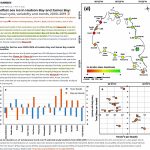
By Kenneth Richard on 7. July 2022
A new study (Gupta et al., 2022) indicates that from 2000-2019 73% of the 15 sites considered have been cooling and 67% have experienced a lengthening of sea ice duration. Canada’s Hudson Bay extends into the Arctic Ocean and its coasts are teeming with polar bears. Scientists report 11 of 15 Hudson Bay sites have […]
Posted in Arctic, Cooling/Temperature, Sea Ice |
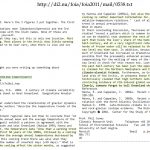
By Kenneth Richard on 13. June 2022
More evidence surfaces showing Greenland isn’t cooperating with the global warming narrative. The notorious “Climategate” e-mail exchanges between activist scientists like Drs. Phil Jones and Tom Wigley revealed how grave a concern it was in 2004 that “GREENLAND HAS BEEN COOLING SIGNIFICANTLY” since the 1950s. “…a warming trend occurred in the Nuuk fjord during the […]
Posted in Arctic, Cooling/Temperature, Glaciers, Sea Ice |
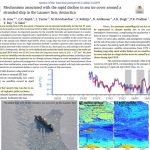
By Kenneth Richard on 30. May 2022
Defying climate models, the sea ice surrounding Antarctica steadily increased during the 37 years from 1979-2015. Even after many decades of studying climate processes and a supposed “consensus” that hemispheric-scale sea ice should decline in a rising CO2 concentration world, climate models cannot simulate the causative mechanisms for sea ice variability. “Over recent decades Antarctic […]
Posted in Antarctic, Sea Ice |
By Kenneth Richard on 14. February 2022
In 2021, several hundred more scientific papers were published that cast doubt on the position that anthropogenic CO2 emissions function as the climate’s fundamental control knob…or that otherwise serve to question the efficacy of climate models or the related “consensus” positions commonly endorsed by policymakers and mainstream media sources. These scientific papers affirm the position […]
Posted in Alarmism, Antarctic, Arctic, Climate Sensitivity, Cloud Climate Influence, CO2 and GHG, Cooling/Temperature, Coral Reefs, Drought and Deserts, Fire, Flood, Glaciers, Hockey Team, Medieval Warm Period, Models, Natural Oceanic Oscillations, Natural Variability, Paleo-climatology, Sea Ice, Sea Levels, Temperature Bias/Urbanization, Warming/CO2 Benefiting Earth |
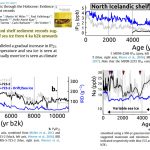
By Kenneth Richard on 13. December 2021
The northern North Atlantic’s sea ice records derived from ice cores and marine sediments consistently affirm there was far less sea ice during the Early/Mid Holocene than in 2000 CE. Even 17th to 19th century sea ice coverage was similar to (or less than) today’s. A 2020 study (Geirsdóttir et al.) indicated peak Holocene warmth […]
Posted in Arctic, Sea Ice |
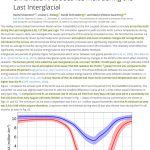
By Kenneth Richard on 15. November 2021
Paleoclimate data indicate there was less Arctic sea ice during the pre-industrial period than in modern times, or when CO2 concentrations were 100 ppm lower than today (280 vs. 380 ppm). Scientists (Diamond et al., 2021) assert that during the 18th and 19th centuries Arctic sea ice extent minimum (September) values averaged 5.54 million km². […]
Posted in Arctic, Paleo-climatology, Sea Ice |
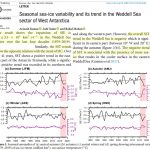
By Kenneth Richard on 27. September 2021
A new study (Kumar et al., 2021) reports the “overall SST trend in the Weddell Sea is negative” since 1979 and this has occurred in tandem with “the expansion of SIE [sea ice extent].” Another new study (King et al., 2021) reports the oldest temperature stations in Antarctica show a cooling/non-warming trend since 1956. Antarctica […]
Posted in Antarctic, Cooling/Temperature, Sea Ice |

By Kenneth Richard on 2. August 2021
In his 1975 book The Genesis Strategy, the late climate scientist Dr. Stephen Schneider reviewed contemporary climate modification proposals to reduce the severe 1960s and 1970s droughts, floods, and extreme weather…which were at that time associated with the ongoing global cooling. One proposal was to eliminate the Arctic’s sea ice by having aircraft dump black […]
Posted in Cooling/Temperature, Sea Ice |
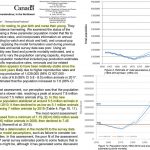
By Kenneth Richard on 21. June 2021
Sea ice has been declining in the Canadian North Atlantic since the 1970s, and yet the harp seal population has been estimated to have risen from a little over 1 million in 1971 to about 7.5 million in 2012 to 2019. But model projections suggest the seal populations will decrease in the future due to…declining […]
Posted in Arctic, Sea Ice |
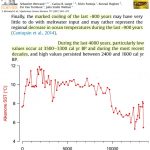
By Kenneth Richard on 10. May 2021
It was previously thought the northern limit for Southern Hemisphere sea ice was 55°S. But recent declines in surface air temperatures in southernmost South America have led to sea ice formation creeping 80 to 100 kilometers further north than previous estimates. Since 2000, sea ice has been extending well into 54°S. The southernmost tip of […]
Posted in Antarctic, Cooling/Temperature, Sea Ice |
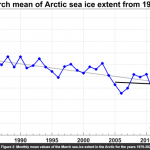
By P Gosselin on 14. April 2021
Though it has dropped since its peak in 1979, Arctic sea ice extent in March has remained stable since 2005. There are two months that are of particular interest in the Arctic: September, when sea ice reaches its minimum, and March, when it reaches its maximum. Gains 504,000 sq km. Today we look at Arctic […]
Posted in Antarctic, Arctic, Sea Ice |
















Recent Comments